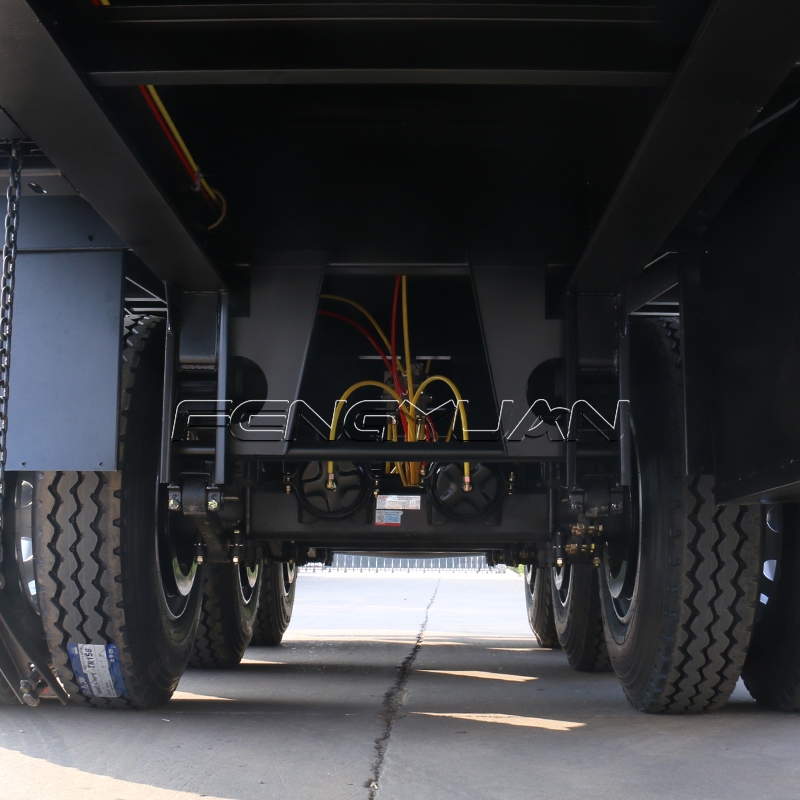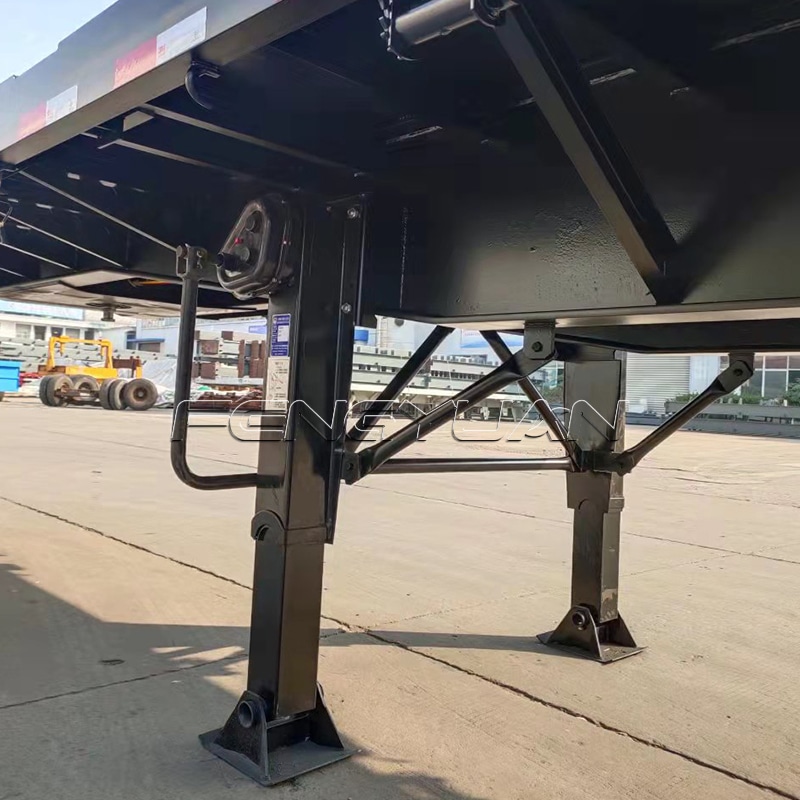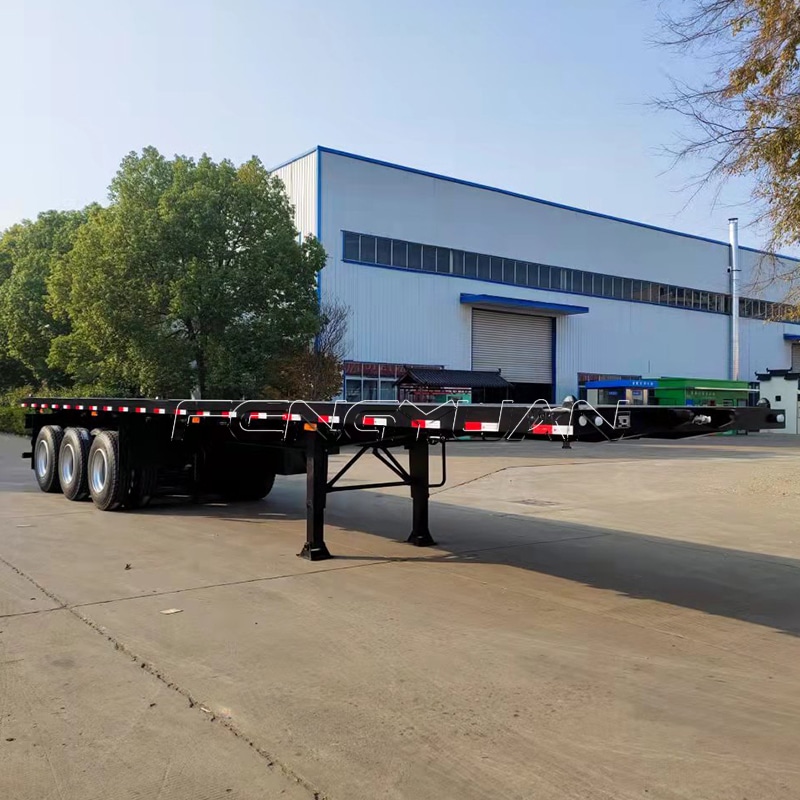A flatbed semi trailer is a very useful platform that is used in the shipping industry. It is primarily used for the transportation of shipping containers of different sizes. This is a long flat platform of either 20ft, 40ft, 48ft or 53ft length used for carrying shipping containers. The flatbed semi trailer has no roof or walls to the side. It is a bare platform on which different container sizes are secured using container locks ready for transportation.The size of the FengYuan flatbed semi trailer loading area is determined according to the standard container size. A twist lock device for fixing the container is provided at positions corresponding to the four corners of the bottom of the container. However, it can also be used to take up other different types of loads. These different types of flatbed trailers have different capabilities and usefulness for various applications as discussed in here. Understanding their operations and basic specifications are vital in helping you choose the type of flatbed semi trailer you will require for your application.
What is the standard size of a flatbed semi trailer?
Each flatbed trailer comes with its own load rating, size alongside other systems as would be needed for its use. These specifications are very useful in helping you buy the right trailer for your operations.The tables below show key specifications of the 20ft and 40ft flatbed trailers respectively.
Model: 3 Axle Flatbed Truck Trailer
Transport: 20ft, 40ft container
Overall dimension: 12500mm * 2500mm *1530mm
Axles: 3 axles , 13t
Suspension: Heavy duty mechanical suspension
Tire: 12 units
King pin: 90#
Langing gear: JOST
Brake system: WABCO
Electical system: 24V, LED lights



评论
发表评论